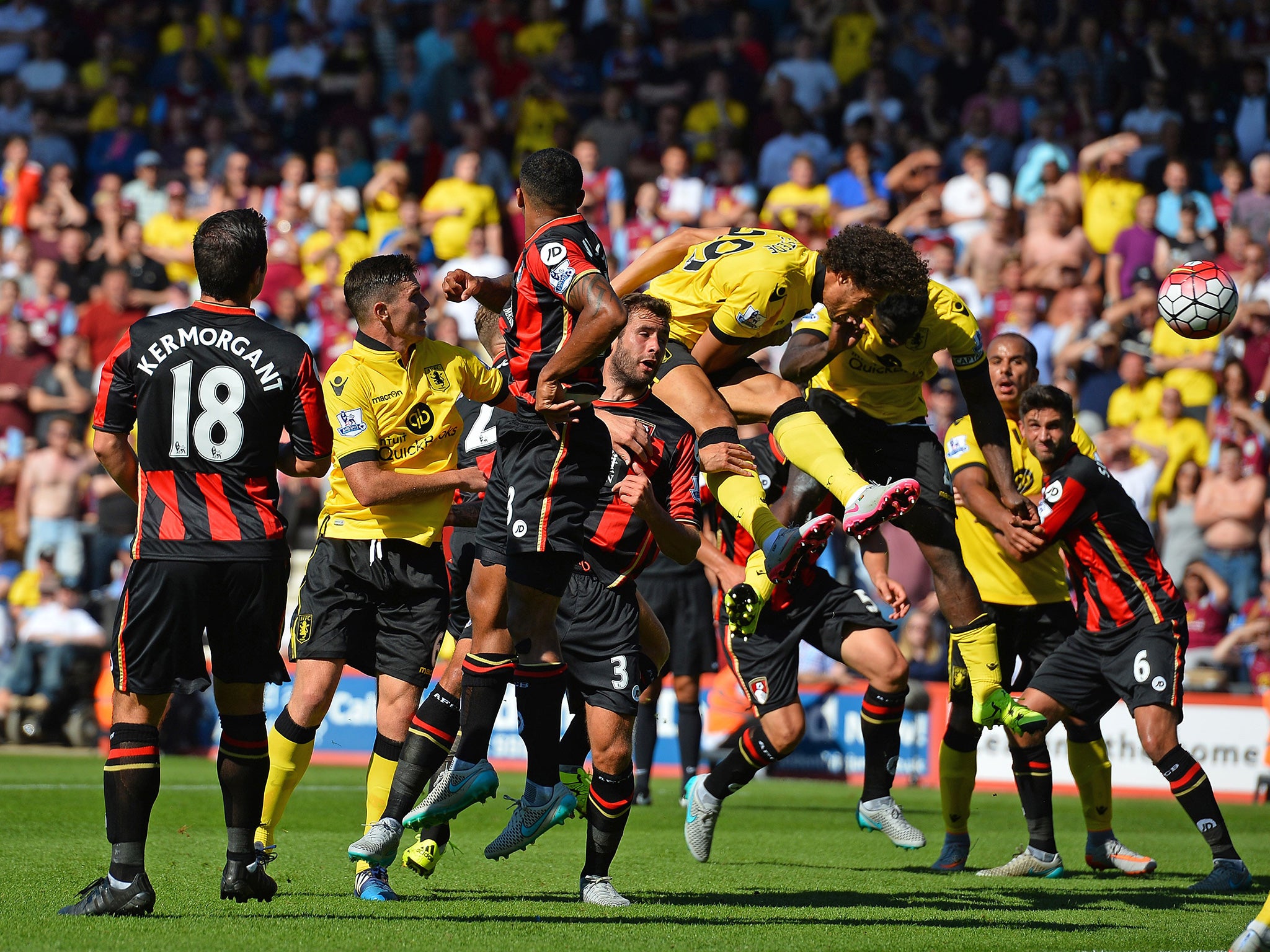Some managers look down on set-pieces – but even in the Premier League they deliver goals
The Weekend Dossier

It was a textbook lower-league goal,” bemoaned Eddie Howe after Aston Villa’s Rudy Gestede headed in from a corner to inflict an opening-day 1-0 defeat on Bournemouth. His newly-promoted team were beaten by another goal resulting from a corner at Anfield on Monday. This time, as the Premier League confirmed on Friday, an errant linesman who failed to flag for Philippe Coutinho being offside, rather than an overpowered defender, was at fault, but Howe is nevertheless now well aware that set-pieces are just as important in the Premier League as in the lower leagues.
This may surprise some. It used to be whenever a team had a free-kick within 50 yards of goal the centre-halves trotted forward and the ball was launched into the mixer. Indeed, when in 1994-95 the Isthmian League was a guinea pig for a Fifa experiment which replaced throw-ins with kick-ins, the penalty area was under near-permanent siege.
However, in recent years, under the influence of Barcelona/Spain, we have become used to teams taking such free-kicks short, especially in the top flight. Yet closer to goal most still prefer to try a shot, or cross into the box, though at that range the ball is usually whipped in rather than just launched.
So far of the 54 goals scored in the Premier League 13 have come from dead-ball situations (plus three penalties). Which means roughly a quarter of goals have been produced from corners, free-kicks or, in one case, a throw-in. It is early days, but this is similar to last season’s figures.
So why was Howe so annoyed? To the coach of a newly-promoted club conceding at a set-piece is especially irksome because it is regarded as more preventable than one created by brilliant attacking play of a quality they might not have previously encountered. If Manchester City’s David Silva and Sergio Aguero combine to score a stunning goal against his team later this season, Howe can reflect that his players are not used to that level of expertise. But Bournemouth faced Gestede twice in the Championship the previous season when he played for Blackburn – and he did not score from a corner then.
Assuming the defenders have been well-drilled (a fair assumption with Bournemouth given Howe and his assistant Jason Tindall are ex-centre-halves and very organised coaches) as long as they do their jobs a simple headed goal from a corner should be prevented. And surely Premier League level players should be capable of doing their jobs?
But opponents are also better. Gestede has joined Villa because he is too good for the Championship. He should receive more accurate service from Premier League corner-takers. His team-mates should be more effective at the dark arts of decoy runs and blocking.
A goal that illustrates the Premier League’s quality was scored by Crystal Palace at Carrow Road on opening day. It is the one that involved Jason Puncheon hitting a deep corner precisely into the space made vacant by decoy runs, allowing full-back Pape Souaré a free header. Souaré’s header was wide, which was probably not as intended, but it was smartly turned in by Damien Delaney. Seven Palace players were involved including those who, as the ball came over, jogged back to cover Souaré’s defensive role. No wonder Alan Pardew was so delighted at the success of his intricate plan.
Three goals to date have come from corners taken short. It is a mystery why more teams do not at least feint to take a short corner as this draws two men out of the defence but requires only one extra attacking player. Each of these goals resulted from inattentiveness by the defenders who were supposed to prevent the tactic – and at Anfield the linesman who failed to flag Coutinho offside. Similar doziness led to Nathan Redmond’s goal for Norwich at Sunderland, from a quick throw-in.
Interestingly, given the criticism laid at the system in the past, none of the goals have been scored against zonal marking. Though some teams use a mix of zonal and man-marking at free-kicks (eg, Arsenal when Cheikhou Kouyaté scored, though Petr Cech took the blame) it is generally man-marking, traditionally preferred in Britain to “Continental” zonal marking, that has been at fault. Gestede scored as he got a vital yard ahead of Simon Francis. Vincent Komany lost Joleon Lescott at West Brom, then out-muscled Branislav Ivanovic to score against Chelsea. Jamie Vardy, with a well-timed run, eluded Sunderland’s Billy Jones.
To give Howe his due, Gestede’s goal, was “a textbook lower-league goal” in that it featured power and desire. But there was also Ashley Westwood’s delivery and the movement of the Villa players. A few coaches appear to think working on set-plays is beneath them, yet when it comes to winning matches, they remain of fundamental importance, even at the highest level.
Subscribe to Independent Premium to bookmark this article
Want to bookmark your favourite articles and stories to read or reference later? Start your Independent Premium subscription today.

Join our commenting forum
Join thought-provoking conversations, follow other Independent readers and see their replies